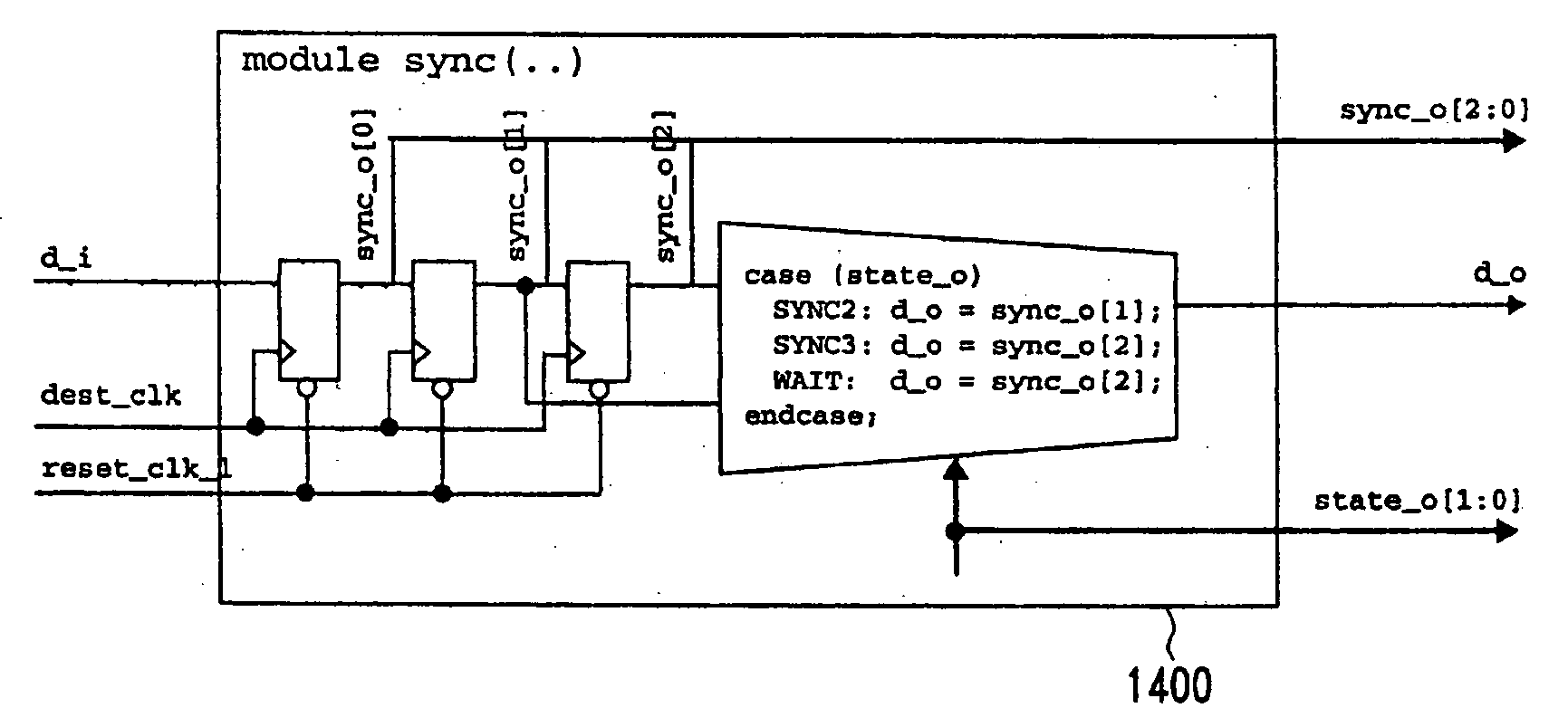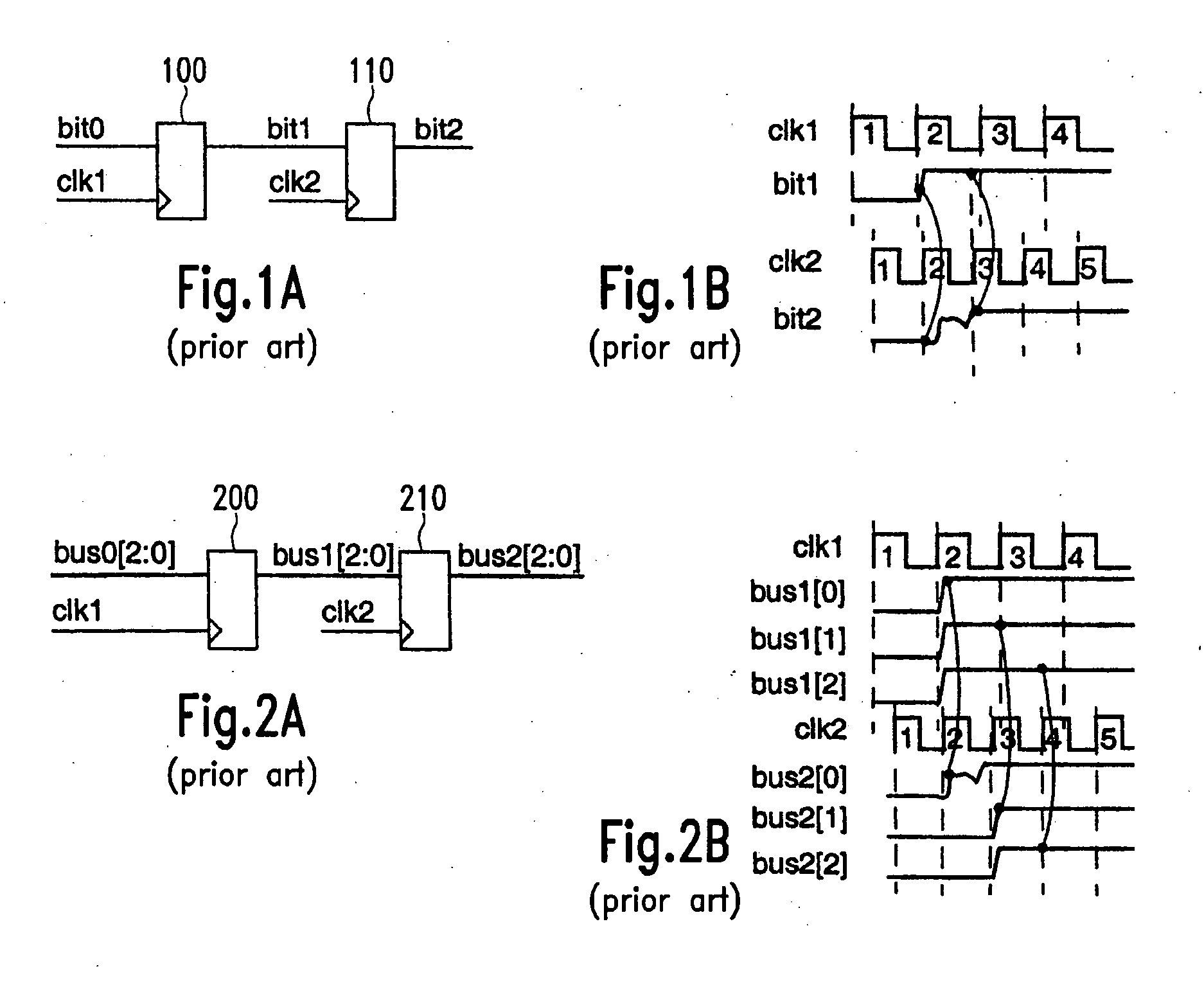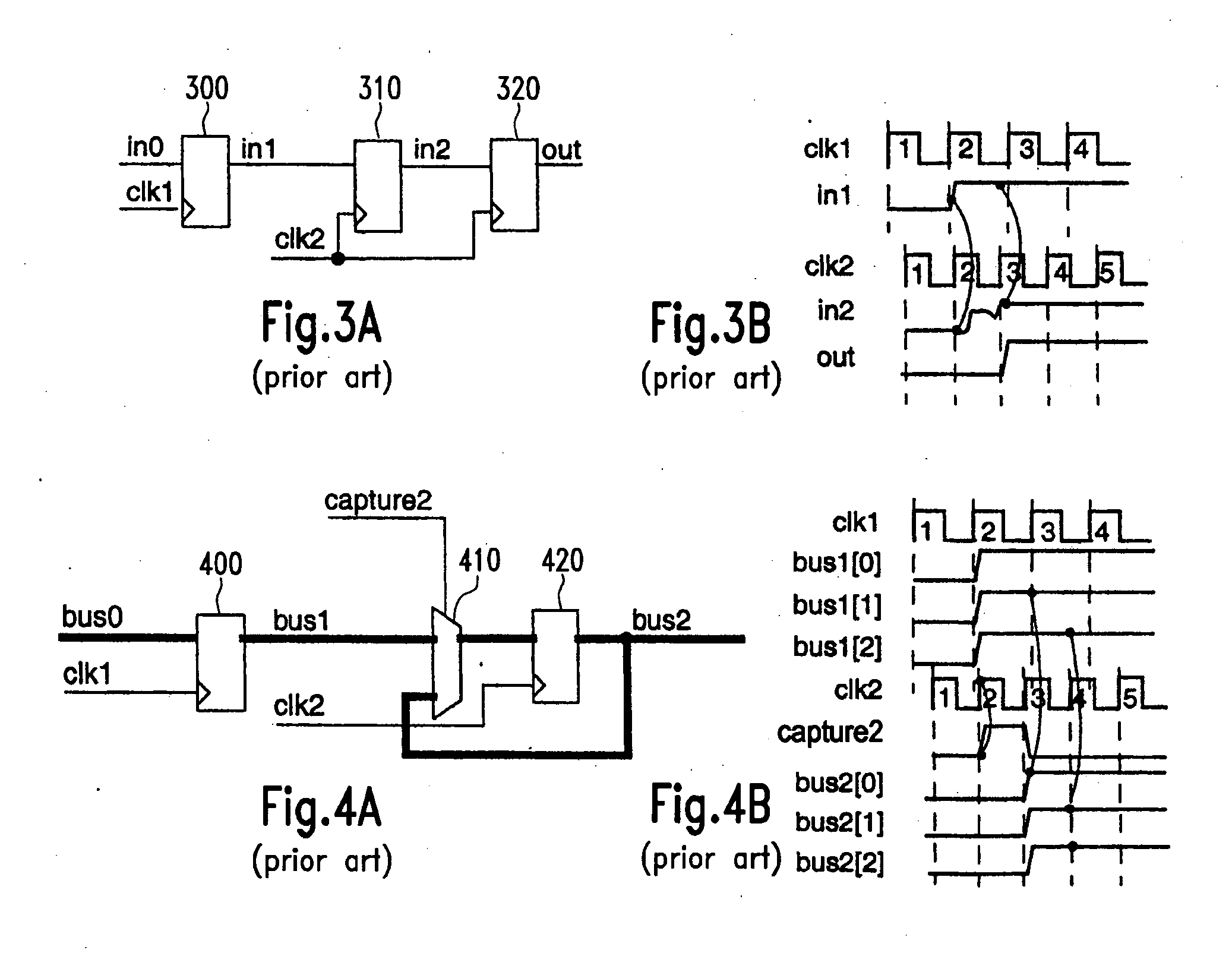Dynamic synchronizer simulation
a synchronizer and dynamic technology, applied in the field of synchronizer modules and methods, can solve the problems of inability to detect design errors in advance, synchronization problems may still occur, and complex digital circuitry, etc., and achieve the effect of better modelling real-silicon behaviour
- Summary
- Abstract
- Description
- Claims
- Application Information
AI Technical Summary
Benefits of technology
Problems solved by technology
Method used
Image
Examples
Embodiment Construction
[0045] The illustrative embodiments of the present invention will be described with reference to the figure drawings wherein like elements and structures are indicated by like reference numbers.
[0046] Before discussing in more detail the synchronization modules of the embodiments which provide a dynamic verification of single-bit and bus synchronization, it is referred to FIG. 5, which illustrates a static verification technique that may be used in connection with the embodiments. In this approach, the whole design structure is mapped onto a graph model which is built from vertex and edge elements. Vertices may be flops (denoted as “f” in FIG. 5) and combinational elements (denoted as “c”). Edges are depicted as wires in the graph model.
[0047] In the static verification approach, the model is partitioned into clock domains and stage levels. As may be seen from FIG. 5, the present example illustrates four different levels. Taking the example of bus synchronization, buses may be ide...
PUM
 Login to View More
Login to View More Abstract
Description
Claims
Application Information
 Login to View More
Login to View More - R&D
- Intellectual Property
- Life Sciences
- Materials
- Tech Scout
- Unparalleled Data Quality
- Higher Quality Content
- 60% Fewer Hallucinations
Browse by: Latest US Patents, China's latest patents, Technical Efficacy Thesaurus, Application Domain, Technology Topic, Popular Technical Reports.
© 2025 PatSnap. All rights reserved.Legal|Privacy policy|Modern Slavery Act Transparency Statement|Sitemap|About US| Contact US: help@patsnap.com



